 What kind of music are you in to?
What kind of music are you in to?
That’s a common question that at one time told us a lot about you – as a person, as a radio listener, and as a music lover.
But more and more, the silos and walls have been eroding, making it difficult if not impossible to categorize consumers – or should we just refer to them as people – by the genre of music they listen to?
Back in the ’70s and ’80s, when format radio perhaps enjoyed its most success, the industry reveled in labels. They provided the maps for how radio stations were programmed, the trades were structured to keep track of “adds and drops,” and how record labels were structured to be able to sign, release, and market artists. Conventions had format rooms (in public radio, they still do). Genres provided a common language so programmers and salespeople could communicate with one another.
And it worked…mostly. Most listeners self-categorized, placing themselves conveniently in industry cubbyholes. “I’m a rocker,” “I’m into country,” “I love soft rock,” “I’m a smooth jazz fan.” More often than not, radio listeners parroted back these same labels.
But all the while, there was an underlying feeling this categorization of music genres was too simple, and not nuanced enough for many people. Some refused to be put into those convenient format boxes. A few claimed to have “eclectic tastes,”undescribable by a single genre – or even two.
In radio, we love our formats They make up the structure that makes it possible to have constructive conversations about music, audience tastes, and trends. In the case of country, the genre has its own annual conference, the Country Radio Seminar. How’s that for looking at a relatively narrow window of taste?
But there are artists like Jelly Roll, Yelawolf, or the Zac Brown Band who defy characterization. Where do they fit exactly – a topic of much debate. To that point, I ran across a website called Country Rap Insider to address the dilemma of “Who’s In? Who’s Out?” These guys have even created established guidelines.
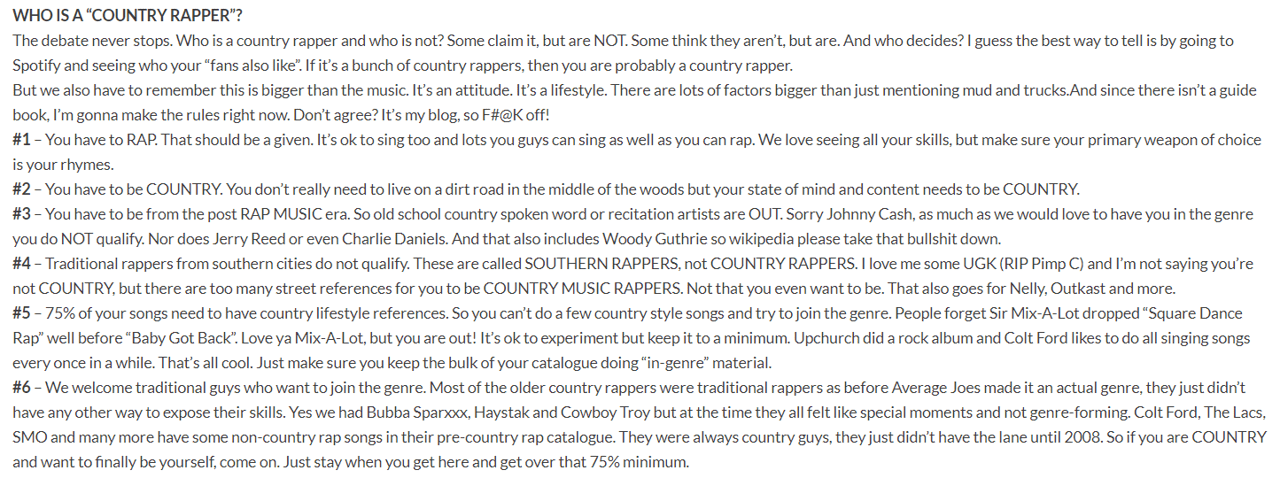
Absurd? Who thinks like this?
I’m not saying this website represents anyone, but it is this type of defined thinking that defies the emotions of how many people think about the music they love.
And to some degree or another, it’s the same way in every format. As programmers, we make judgments as to who is/who isn’t “Classic Rock.” They either are added to stations or they aren’t. And while some research companies test “fit” on established market stations, the process of designating an artist as “Classic – or not?” is subjective, clunky, and often frustrating for fans.
 When did the traditional lines between formats and genres start to get blurry? I trace it back to the proliferation of the Apple iPod just over two decades ago, a device that allowed consumers to structure their own music. It was not the first mp3 player, but it was the most elegant and workmanlike. Features like listening to playlists on “shuffle” allowed us to jumble and mix up the music even more, creating an even greater sense of variety and “oh wow.”
When did the traditional lines between formats and genres start to get blurry? I trace it back to the proliferation of the Apple iPod just over two decades ago, a device that allowed consumers to structure their own music. It was not the first mp3 player, but it was the most elegant and workmanlike. Features like listening to playlists on “shuffle” allowed us to jumble and mix up the music even more, creating an even greater sense of variety and “oh wow.”
“Train wrecks” became standard, even desirable, as Dolly Parton would live next to Insane Clown Posse, Weird Al Yankovic,, and Jon Batiste. More and more, consumers heard their “guilty pleasures” on their iPods, making for an even more enjoyable experience. (And we still don’t know if Dolly remains a country artist, now that she’s crossed over to rock.)
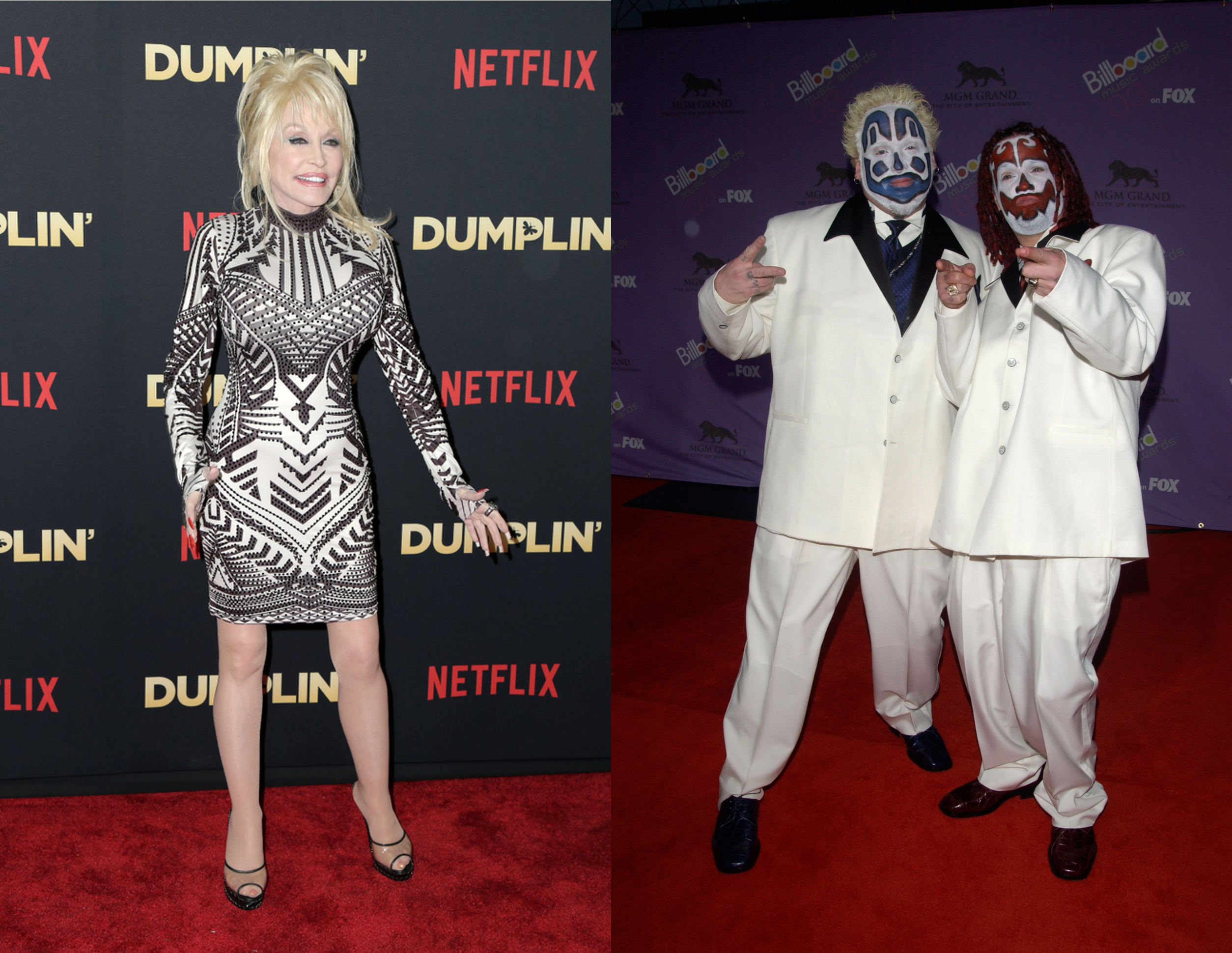
The other sweeping effect of the iPod was its ability to obliterate time. That is, it doesn’t really matter whether a song came out last week, last year, or in 1973. If it’s on a playlist, what’s old is new – if you’ve never heard it before, it’s new to you – even if it was first released in the Carter Administration.
Personal playlists, first on iPods, and now standard equipment on digital streaming platforms have allowed eras to cross, blend, and mix. And yet in radio, we continue to “era code,” often using lines of demarcation (like “decades”) that only make sense to those of us building the architecture behind these systems. To listeners, whether “Another Brick In The Wall” is a ’70s or an ’80s song is irrelevant. (It was released in December 1979.)
You’d think Spotify would be well ahead of the curve, especially when it comes to genre bending. While they still can’t figure out a way to turn a profit, it still makes sense for them to encourage users to listen to as many different sounds, styles, and genres as possible. (It was announced as this post published, Spotify is laying off another 1,500 employees – or 17% of its workforce – its third round of cuts this year. CEO Daniel Ek predicted the company would be profitable in 2024.)
When they send us our “Spotify Wrapped” annual summaries, we learn about our most-listened-to “genre” during the past year. And yet, many people not only don’t like to be labeled – they believe their diverse tastes defy categorization into a single category. A friend sent me her “Spotify Wrapped” video. And as she said to me in frustration, “There’s more to me and my eclectic tastes than just being labeled ‘Pop.'” (I added the green circle on the graphic below.)

Last week, BBC News took the popular DSP on with a story aptly titled:
Spotify Wrapped 2023: ‘Music genres are now irrelevant to fans’
Reporter Christian Brooks takes the reader on a tour of Spotify’s spotty way of categorizing music, noting they now use more than 6,000 genre classifications. (You can peruse the most popular of the bunch here.)
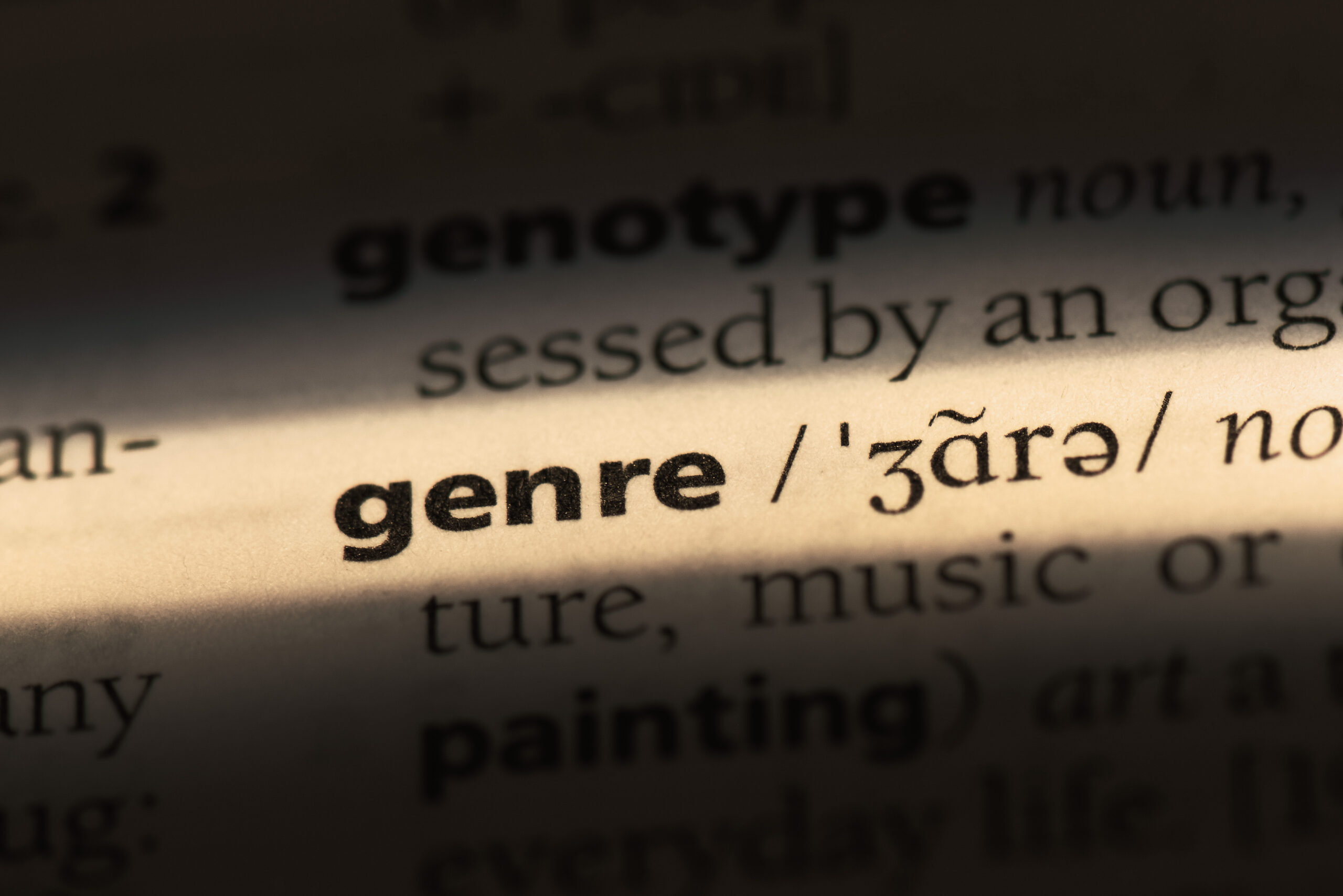 It’s a provocative story you’ll find interesting, if you have feelings about the way music is coded, sliced, and diced – now by the biggest streaming service of them all.
It’s a provocative story you’ll find interesting, if you have feelings about the way music is coded, sliced, and diced – now by the biggest streaming service of them all.
A few of the high points and some thoughtful quotes:
- Many fans eschew genre in favor of being core fans of an artist or group – Swifties, the BTS Army, and other artists.
- Murkage Dave, an East London artist: “Today, I feel like the infrastructure of the music industry cares a lot more about genre than the fans.”
- US journalist/music critic Kelefa Sanneh: “(Genre has) been helpful for radio stations to be known for playing specific kinds of music and genres, for example. That way, listeners can pledge their loyalty not only to the genre but to the station.”
- Nathaniel Cramp, founder of record label Sonic Cathedral, specializing in “shoegaze,” a musical sub-genre: “In the past, genre was something that was applied to an artist’s music by external forces – be that the music press, or whoever – whereas now, you have to choose your genre yourself in order to describe and release music. That is a weird twist.”
- US musician Joanna Sternberg: “Defining music is complicated.”

But the last word goes to Murkage Dave who cogently expresses the frustration artists themselves feel over being pigeon-holed:
“Personally, I would like to get to a place where I’m just taken on the merit of the work that I do, rather than every time I have a meeting with someone on the business side of things they’re saying, ‘What box can we put this in?’ I find that can be demoralizing at times.”
Too often, we need a genre reference point in order to have a dialogue. I vividly recall frustrating meetings with the sales teams at stations we had just flipped to the “all new Classic Rock format.”
After I described the philosophy, the core artists, the audience, and the station’s style, inevitably a rep would ask, “But what other format is it like?” meaning they could only process this new kind of station by associating it with an existing format.
As much as I pushed back – “It doesn’t sound like anything else! That’s the point” – the meeting still devolved into wishful thinking I could somehow jam Classic Rock into a familiar box so they could package and price it.
In even more profound ways, this is how many artists see the “invisible fence” labels, radio people, and DSP’s like Spotify erect in order to keep a genre pure while pushing anything that may be outside the boundary lines out.

That’s why I was surprised while listening to SiriusXM the other day, and heard John Mayer voice a promo for his new channel called “LIFE.” At a very accessible Channel 14 in their lineup, it is bound to get sampled.
Marketed as “The channel that changes with you,” Mayer stresses that the new genres in our lives aren’t labels like “pop” or “Americana” – but instead, songs we love hearing on a rainy day or ones we remember from junior high school.
In many way, the premise behind this genre-busting channel is emblematic of Mayer’s own career, cutting across conventional boundary lines that include deep dives into pop, rock, blues, and the Grateful Dead. In many ways, his career defies categorization, which is precisely his point.
Here’s his “take” on a channel where Mayer himself will curate the music:
“I’ve had a dream over the last several years to create a dynamic, real-time music channel that focuses less on genre and more on our changing emotional states throughout the days and weeks. I look forward to creating and fostering a sense of community through this channel, and shining a light on what music does best – providing the soundtrack to our lives.”
If anything, SiriusXM is one of the most genre-driven music services available to consumers. With exceptions like “Little Steven’s Underground Garage” or “Spectrum,” most of their channels are fairly narrow in their music selections.
It will be fascinating to chart Mayer’s progress with this channel. Not being rated, of course, has its benefits. But SXM will no doubt watch the listening metrics carefully on this one.
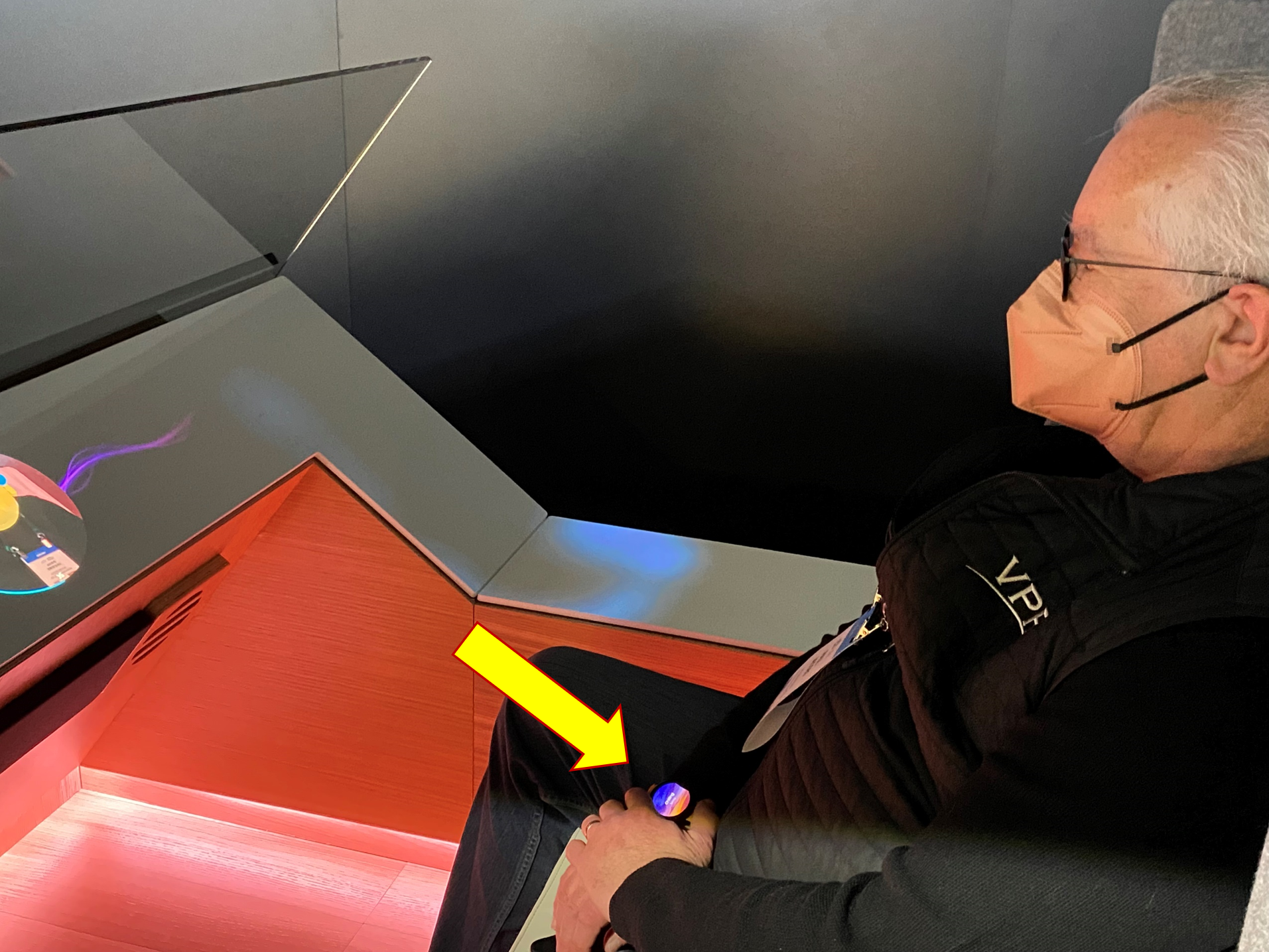
Radio that matches an attitude, a feel, a moment, a vibe is actually in-line with how some auto companies envision their infotainment systems. Some are employing additional cameras, trained on the driver, rather than on the road ahead. This technology uses AI to assess the state of mind of the person behind the wheel, and deliver music programming to match – or counter – that mood. If you’re stressed, the system will attempt to deliver relaxing, calming music. If you’re pumped up about that sports event you’re headed to, you’ll hear adrenalin-pumping songs.
The simulator Paul is “test driving” at CES a couple years back uses a “mood watch” to track his emotions (pictured).
Those of us who program music radio may be thinking about an entire new set of criteria in order to satisfy a changing audience before long. Rather than concentrating on “The ’90s to Now” or “Today’s Best Country,” our challenge may be to help listeners better feel what they’re listening to.
Will a breakdown of genre silos change the way we approach programming FM radio moving forward? Does AI technology provide insights into mood and mindset?
Or will we be simply continue playing rock and AC hits, adhering to our formats?
P.S. Sometimes you get an omen you should take a certain action. While writing this post over the weekend, I logged onto The New York Times to play “Wordle.”
Here’s how it worked out. Suffice it to say, I felt better about this post. 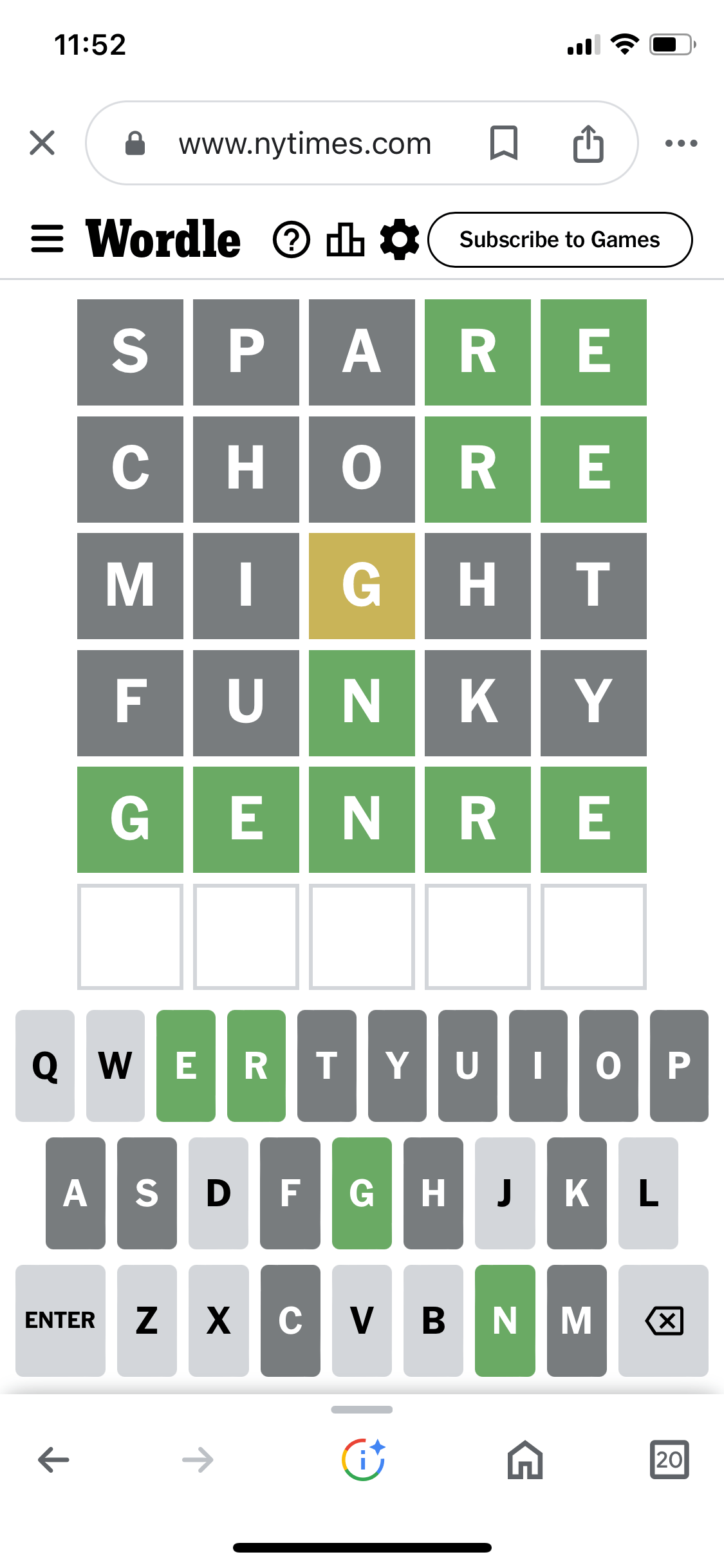
- What To Do If Your Radio Station Goes Through A Midlife Crisis - April 25, 2025
- A 2020 Lesson?It Could All Be Gone In A Flash - April 24, 2025
- How AI Can Give Radio Personalities More…PERSONALITY - April 23, 2025




I’m 34, and the John Mayer channel is my new favorite channel, but another musician breaking genre boundaries is Kelly Clarkson from a female point of view. Not that anyone other than people in their 60s actually have an opinion that matters, and no one cares what my generation thinks other than cheap vox pops, but Alt and Ac creating mood parting would probably be the most likely success stories.
I’m 70 years old and all I mostly listen to now and for some time is alternative rock.
I do think John Mayer is on to something here though.
Sometimes I listen to music to put me in a certain mood or because I’m in a mood already and want to the mood I’m in or sometimes I listen to music to get out of that mood.
It all comes down to my emotional state at the time.
Great article, Fred !!!!!
Brandon, thanks for the heads up on the Kelly Clarkson heads-up. And for the record, I value every thritysomething who takes the time to offer an opinion here. Appreciate you reading the blog and commenting.
Thanks for the article. I especially appreciate John Mayer’s comment about creating and fostering a sense of community. Radio used to be king of the hill in that arena. Maybe this will lead stations to recommit to that goal. It was always the sense of community that endeared me to my favorite stations, and that came through great imaging and personalities I could relate to more than just the music. It meant when I showed up at a station event, I’d meet people like me. And it meant I could connect with others over a shared passion for something. I’d love to see that effort revived in radio.
Frank, that sense of community is a key point in all this. People no longer define themselves by the radio they listen to. Some of that has to do with rampant competition, but more of it is due to the lack of handcrafted efforts radio puts into music programming.
Labels are great! They help keep things organized.
However, where label based systems fail is when you try to translate that into the simple yes-no world of computers. That’s when it gets messy. As in your example, does Dolly Parton go under country, pop, or rock? Or do you create multiple labels? These are things people can do very well on the fly, but computers are only as good as their programming. (And how well trained is your staff at entering data?)
The same issue is at play with spotify labels – while their categories may work in general terms, do people agree with them, especially when they are the ones being labeled? If your friend disagrees with the pop label, how would she prefer to be identified? Computers are good with numerical/objective data like how many time did you play Taylor Swift? Or What percentage of your listening time was spent on the Rolling Stones? Computers are less good at how many sad songs do you listen to? Or other emotional/subjective criteria.
All in all, it’s just another battle of users vs providers. We are seeing, again, that how people use a product is often not how the providers thought it would be used.
Paul, your last line is gold. That gap between design and usage oftten tells an important story. Thanks.
Once upon a time the CBS FM stations could chart their own waters. Starting with “The Mellow Sound” The original mass appeal adult album station was heard as “Softrock” (The Eagles. Without the turkeys. & Joni. Without the baloni.) on WEEI/FM Boston, 1977. It was a blend of top artists, classic hits, album cuts with relaxed talk, information, short features and even some “Jazz at Noon” thrown in. It worked. Great music demands daily curation. Comfortable connection and feeling is the Secret Sauce to presentation. Thank you again, Fred.
Clark, the “daily curation” reminder is an important one for programmers. I also know you’ll appreciate today’s post on algorithms (and humans).
I have been preaching the exact message as Mr. Mayer, an artist I personally put into the system BEFORE his Columbia debut when building The Loft at XM from scratch in 2001. It was our mission to “re-invent radio” and my mantra for many years is that there is no good or bad regarding music, which is subjective. There is only Like and Don’t Like, everything else is Marketing. For 17 years I hand programmed and mixed that channel, continuing to evolve it until a few years after the “merger” when the slow and steady let’s just bury it plan was obviously under way. It became increasingly aggravating, but I loved my job until the final few years, when I just wasn’t feeling well. But the last few months were the hardest as I was about to make the same mistake as The Ol’ Professor himself. Paraphrasing Casey Stengel, “I’ll never make the mistake of turning 60 again.” And no I will not cut my library to 800 titles, and no I will not disrespect the music by creating a “Battle Of The Bands” set up like an elimination Basketball Tournament with Artists replacing teams. And yes I would like to see the research that proves The Loft is the lowest rated music channel, which they never would show me. I told them I has no asperation to be a VP, I love what I do and will continue to work 60+ hour weeks, just don’t lie to me. If you have concerns or questions I am very easy to get along with. But they were annoyed I came into the company at Director level and I was one of the last original programmers in that situation that hadn’t parted ways or adhered to the new Corporate policies. I told them as politely as I could that if they were unsatisfied with my performance just fire me. It took them a few years to wear me down, but at the end I was feeling so lousy I gave in and resigned. A few months later when I was diagnosed and began treatment for Stage 4 Lymphoma I knew why. They turned my service off at Midnight January 1, 2018. Not a single one of them ever picked up the phone. I was cancer free by the end of 2018 and remain so to this day. I would do it all again, my only regret is not leaving after the merger.
Well, Mike, you’ve explained why I dug The Loft, before it retreated to the internet-only section (useless). You get my heartfelt thanks for the Richard Thompson studio session in DC (April 2017) that my wife and I got to attend for being one of the lucky callers, too. I’m so sorry you got shafted and glad you recovered.
The larger point, also well stated above, is Community. Genre is way less important than trust in the presenter (what we call talent in this industry, because that’s what it is), who can be relied on to do the research and play good stuff that you may or may not have heard before but regardless it’s worth your attention and, more likely than not, fits the mood. Sometimes you even find this at commercial FM stations (shout-out to Tommy Carbone at WCLZ), and it’s pure gold when you do.
Good one, Fred.
Mike, thanks for teling your story here. And I’m glad you’re feeling better. I would love to see you also weigh in on today’s post about algorithms vs. humans.
Fred, I have not told a very tiny portion of “my story” but the story of a remarkable group of programmers that were brought together by Lee Abrams and Dave Logan from all corners and plopped down in an abandoned building in D.C. once the home of National Geographic in a still dangerous section of the District. At the start if was akin to a radio convention with the bulk of the attendees comprised of the “square pegs” of an industry that as far as music was concerned, was on life support. Did everyone get along? Absolutely not. But that was a good thing. In fact, I believe it was essential.
With very few exceptions, personal differences, eccentricities, philosophy, lifestyle, politics and all the ephemera that make us human, took a back seat to RESPECT. Lee and Dave had somehow managed to find a disparate group of professionals that still respected radio, music, creativity and most of all, the audience. The true believers that against all odds still burned with passion that “theater of the mind” was an essential ingredient regardless the format, and is what was missing. We could disagree but with near 100% certainty, we had respect for each other.
The secret sauce was AFDI. That’s what enabled us those first few years to literally work 7 days a week, upwards of 12-16 hours a day in a place where food and supplies had to be brought in and once it was dark you needed an escort to go to your car. So many may talk the talk about what was needed to reinvent radio, including a large percentage of us. But up to that point no one was able for various reasons to do what was needed to accomplish it. Checking your ego at the door may sound easy, but until it happens there is no chance of success. AFDI made that happen. Quincy Jones loved that. When he was told that it stood for Actually Fucking Doing It, his face lit up like a Christmas Tree, I can still hear him laughing. Four letters, one mission.
I have never gone on record about my 17 years in the thick of it and really don’t know why I wrote what I did yesterday, but glad I did. It all starts with respect and as someone from the creative side of the equation that has been replaced by a lust for power. AFDI.
Mike, I”m glad that for whatever the reason, you AFDI.
And as your story underscores, wheen you’re passionate, motivated, and on a mission (especially someone inspiring like Lee), the hours, the pay, and the ramen mean oothing.
We’re missing that spirit in laarge part today. There are still many radio people who are motivated by their own sense of self. I wish leadership could give them the rationalbe to stay with it, but we are living through exceedingly difficult times in our industry. Thanks again, Mike.
It sometimes depends on who’s listening with you. On trips where a wide age range of passengers are in the vehicle its Moasic xm 15.
When listening alone to reiterate what was said earlier, if I haven’t heard the song then it’s new music to me no matter when it was produced. Enter Deep Tracks, Under Ground Garage or even the Big Bands of the 40s.
Who’s in the room is clearly a variable, Dave. The old slogan, “the station everyone can agree on at work” was crafted for a raeason. Thanks for commenting.
Am I the only one that gets a “full of ourselves and only we know what is right” vibe from that website example defining “country rapper” (and I still don’t know what that is, even after reading it)?
Format labels are really only useful for Arbitron (oops, Nielsen) anymore. Technically, I am doing “80s’ Hits” by their definition but we don’t sound much different, other than focus, from Classic Hits and Adult Hits.
I wonder what the old CBS-FM “Mellow Sound” (which was KNX-FM here in L.A.) would be classified as in today’s rating system?
K.M. you got the same vibe I did. Who thinks about music like this? If I’m an artist, I’m especially disheartened by someone (who probablhy as no music ability) slicing and dicing my songs up. When fandom becomes fanaticism, it’s not healthy.
On the flipside is something that’s been bubbling around my head for a bit, since it actually does happen on commercial, broadcast radio in some places (albeit in specific cases): having a playlist that varies more by language (beyond a local-language/English mix) than by “genre”.
One of the reasons that I’ve been paying a lot of attention to radio in Portugal is that there’s an obvious English/Portuguese/Spanish mix on the main current-based stations. However, a couple of regional/national outlets in France (the venerable Latina [which I really regret not paying a lot more attention to earlier] and the newer Capsao [which also happens to have an offshoot in Lisbon]) have a primarily Spanish/Portuguese/French/Italian mix (along with related tracks in English).
Both Latina and Capsao today are Tropical-focused, but Latina may have been broader in its early history–as might be evidenced by its subchannels. (Either Latina really did play Mecano, Maná, Julieta Venegas, Ella Baila Sola, Amaral, Cómplices, Gipsy Kings, Los Lobos, Laura Pausini, Eros Ramazzotti, and even [the real] GNR back then, or it did a lot of original research in creating those subchannels.) Likewise, Antena 1 from Portugal’s pubcaster RTP/RDP has a specialty music show (“Bairro Latino”) that explicitly serves as such a language-based mix (albeit with the understandable omission of Portuguese).
Your worldly peerspective is always welcome, Eric. Appreciate your contributions.
Fred, the radio world was built on “pleasant surprises” when that was possible. Case in point- “Don’t Ask Me Why” by Billy Joel. The Columbia rep brought that to me -and I put it on the air immediately. “Shattered Dreams” by Johnny Hates Jazz. Same story. Rather than waiting to see the metrics (who added it, how’s it going) – the song “fit” what we were trying to create with our radio station(s). It’s thoughts like this that created formats like “Hot AC”. Great testers like “In The Air Tonight”? No, but they just sounded great on the radio. Even back in 1963, those songs by those 4 guys from Liverpool created that “pleasant surpise”. Human moods change by the minute and successful radio always seemed to reflect that. Can AI help? Should we go back to the galvanic response tests? Should we even try to recreate radio’s ability to create a sense of community or has the “personal playlist” become more important to today’s consumer?
“Songs that just sound great on the radio” – that ought to be one of John Mayer’s genres. Thanaks for weighing in, Dave.
JACK-FM would certainly agree with this great post, Fred.
He would indeed, always a lover of “train wrecks!”
I was always a fan of your work at the Loft Mike. Just yesterday I turned on David Johansen Mansion of Fun on the Loft. It was the perfect compliment to a rainy Sunday afternoon in Central PA. David masterfully weaves together a musical tapestry that encompassses the history of American Contemporay Music and beyond. Talk about setting a mood.
David Johansen is one of the finest humans on the planet, and forgot more about music than 98% in the world. His love and knowledge for music astounded me. I believe he is truly a National Treasure. I have nothing but love and respect for him and would work with him on anything.
One of the simplest and best examples of the thinking you are espousing are the Christmas music stations that pop up every year at this time.
Good one, Bill.